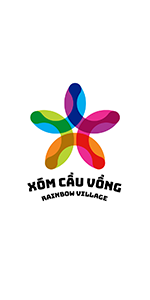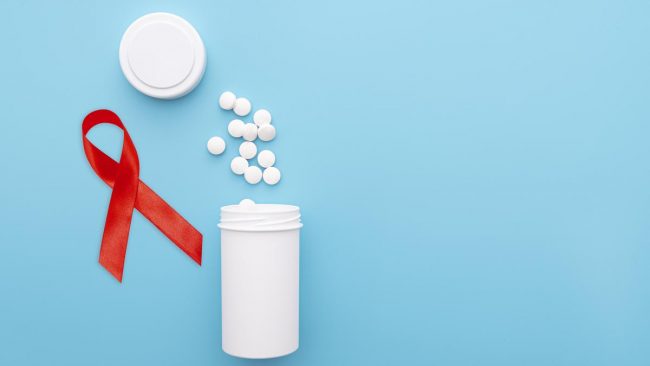It has been 20 years since the pathbreaking free Antiretroviral Therapy (ART) initiative began in India, and it has lessons for other public health programmes
April 1 marks a very important day in the history of response to the HIV/AIDS epidemic in India. Twenty years ago, on April 1, 2004, the Indian government had launched Free Antiretroviral Therapy (ART), for Persons living with HIV (PLHIV), a decision which has proven one of the successful and a key intervention in the fight against HIV/AIDS.
At the emergence of HIV/AIDS in the early 1980s, the disease was considered a death sentence and was met with a lot of fear, stigma and discrimination. Though the first antiretroviral drug, AZT (zidovudine), was approved by the US Food and Drug Administration (US FDA) in March 1987, three more drugs were approved soon after in 1988 and a new class of antiretroviral drugs, protease inhibitors were introduced in 1995. But access to these medicines remained limited for most of the world’s population except in some high-income countries.
The evolution to free ART
Recognising this challenge, in 2000, at the UN General Assembly’s Millennium Summit, world leaders set a specific goal and issued the declaration to stop and reverse the spread of HIV. The Global Fund to Fight AIDS, Tuberculosis and Malaria was created in 2002 which advocated universal access to HIV prevention, treatment, care and support services. In 2004, the number of PLHIV in India was estimated to be 5.1 million, with a population prevalence of 0.4%. Very few of them were on antiretroviral therapy. Even by the end of 2004, only 7,000 PLHIV were on ART.
The key barrier to ART was high cost and unaffordability for individuals, and geographical access to treatment. In fact, the so-called ‘cocktail therapy’ or HAART (highly active antiretroviral therapy), a combination of three or more anti-retroviral drugs, had become available starting in 1996, but costs were prohibitively high ($10,000 a year). People infected with HIV were stigmatised and lost their lives while health-care providers felt helpless due to non-availability/non affordability of ARTs.
Therefore, the decision to make free ART for any adult living with HIV was a path-breaking one. From November 2006, the free ART was made available for children as well. In two decades of free ART initiative, the facilities offering ART have expanded from less than 10 to around 700 ART centres — 1,264 Link ART centres have provided, and are providing, free ART drugs to approximately 1.8 million PLHIV on treatment.
ART is not merely about starting a person living with HIV on treatment. It is equally important to keep the viral load down and suppressed to ensure that the transmission of diseases is also halted. The impact has been that in 2023, the prevalence of HIV in 15-49 years has come down to 0.20 (confidence interval 0.17%-0.25%) and the burden of disease in terms of estimated PLHIV has been coming down to 2.4 million. India’s share in PLHIV globally had come down to 6.3% (from around 10% two decades ago). As of the end of 2023, of all PLHIV, an estimated 82% knew their HIV status, 72% were on ART and 68% were virally suppressed. The annual new HIV infections in India have declined by 48% against the global average of 31% (the baseline year of 2010). The annual AIDS-related mortalities have declined by 82% against the global average of 47% (the baseline year of 2010). These are significant achievements considering that many of the other government-run public health programmes in India have failed to achieve or sustain good coverage.
Patient-centric approach to services
It will be unfair to credit free ART alone for the success. There were many complementary initiatives which have contributed to halting the HIV epidemic. These include the provision of free diagnostic facilities; attention on prevention of parent to child transmission of HIV (PPTCT) services; prevention, diagnosis and management of opportunistic infections including management of co-infections such as tuberculosis (TB).
Also read | Need to scale up HIV response for those at higher risk, say experts
The programme has shown agility and dynamic modifications. Early initiation of ART and Treat all policy evolved over the years where the ART eligibility criteria were relaxed — from those having a CD4 count less than 200 cells/mm3 (in 2004), to that less than 350 cells/mm3 (in 2011), and then to less than 500 cells/mm3 (in 2016). And, finally, there was the ‘Treat All’ approach from 2017, which ensures that ART is initiated, irrespective of CD4 count. This has been a true universalisation and has contributed to reduced virus transmission, both at the individual and the community levels. This is supplemented by free of cost viral load testing for all PLHIV on treatment. The programme also adopted a patient-centric approach by providing two to three months of medicines to stable PLHIV which minimises the number of patient visits to the ART centres, reducing travel time and costs for the patients.
This approach also increases adherence to treatment besides decongesting ART centres by reducing the average daily OPD, giving health-care workers more time to attend to other patients. India continued to add newer and more potent drugs to the programme, as and when those became available. For example, Dolutegravir (DTG), a new drug with superior virological efficacy and minimal adverse effects was introduced in 2020. In 2021, India adopted a policy of rapid ART initiation in which a person was started on ART within seven days of HIV diagnosis, and in some cases, even the same day.
However, the fight against HIV/AIDS is far from over. The ongoing and fifth phase of India’s National AIDS Control programme aims to (by 2025) reduce the annual new HIV infections by 80%, reduce AIDS-related mortalities by 80% and eliminate vertical transmission of HIV and syphilis.
To achieve this, the National AIDS Control Programme (NACP) phase 5 calls for the attainment of ambitious targets of 95-95-95 by 2025, where 95% of all people living with HIV know their HIV status; 95% of all people diagnosed with HIV infection receive sustained antiretroviral therapy (ART), and 95% of all people receiving antiretroviral therapy achieve viral suppression by 2025. These targets are aligned with global targets agreed by the UNAIDS.
Crossing the hurdles
There are a number of challenges yet to be tackled. First, the delayed enrolment to the ART facilities is the biggest challenge to the national programme. In India, patients presenting with CD4 count <200 to ART centres constitute almost a third of total foot fall. Second, after starting on ART and continuing, the patient starts feeling well. But the moment this happens, they start missing doses and miss medicines for months or completely drop out. This results in the development of resistance as well. This ‘loss to follow up’ needs to be addressed. Third, the sustained supply and availability of ART needs to be ensured by the national programme, in every geography of the country and more so for tough terrain, hilly and remote areas. Fourth, there is a need to focus on the private sector engagement in care of PLHIV. Fifth, there is a need for constant training and capacity building of staff as science keeps evolving and should be focused more on hands-on training. Sixth, there is a need to focus on strengthening integration with other programmes such as hepatitis, non-communicable diseases (diabetes and hypertension) and mental health as PLHIV are living normal but have other health conditions that need to be addressed. Seventh, a focused approach needs to be adopted to reduce preventable mortality that includes systematic death reviews and availability of advanced diagnostics.
The free ART initiative in India succeeded, inter alia, due to the political will and constant support of successive governments; sustained and sufficient funding, regular programme reviews and field-based monitoring, a series of complementary initiatives; community and stakeholder engagements and participation; people-centric modifications in the service delivery; bridging the policy intentions to implementation gaps, and continuous expansion of services to cover more people living with HIV.
The free ART initiative arguably paved the path for bending the HIV/AIDS epidemic curve in India. It is a testament to the point that if there is a will, the government-run public health programme can deliver quality health services free, and available and accessible to everyone. The 20 years of free ART and subsequent steps under the NACP have the potential to guide other public health programmes in the country. As an example, the learnings can and should be used to launch a nationwide free hepatitis C treatment initiative in India and accelerate progress towards hepatitis C elimination.
Dr. Chandrakant Lahariya, a medical doctor, has more than 15 years of work experience with the World Health Organization (WHO) in its India Country office, New Delhi, its Regional office for Africa in Brazzaville and at the WHO headquarters in Geneva. Dr. Amit Harshana, a medical doctor, is an infectious disease and HIV specialist. He has done extensive work in the area of HIV/AIDS
Source: The Hindu

